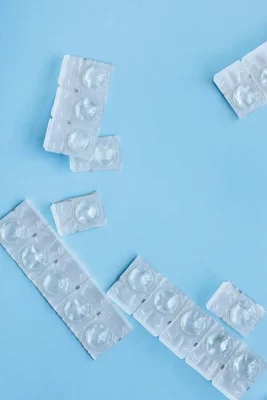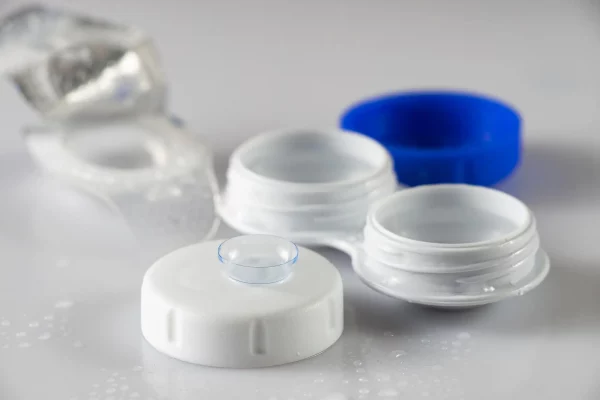Blog
Contact Lens Trends in Global Market
Contact Lens Trends in Global Market

Contact lens trends in global market proved by a compilation of statistics over the past decade over the past decade has gone through phases of ups and downs: a period of rapid growth alternating with a period of stability.
From 2009 to 2013, the global contact lens market size experienced a period of rapid growth; from 2013 to 2015, it leveled off; from 2015 to 2016, growth slowed down further; from 2016 to 2019, contact lens sales rose together with e-commerce in the new consumer era and reached a scale of $9 billion in 2019.
The impact of the new crown epidemic on the contact lens industry
However, due to the global recession brought about by the epidemic, the market size of contact lenses declined by nearly 10% to US$8 billion in 2020, the first time since the global financial crisis in 2008 that the global contact lens market size fell by a typical growth range of 4% to 6% in 2020.
This decline is quickly halted in 2021, when the global contact lens market is expected to soar to nearly $10 billion, according to an annual report published by Contact Lens Spectrum, a professional contact lens journal, most notably on two major trends related to materials and usage cycles.
Material: silicone hydrogel without equal
In the 1930s, Plexiglas was first used to make contact lenses, often referred to as PMMA, which was the earliest contact lens material. PMMA was cheap, durable, and had excellent optical properties, as well as good surface wettability, and dominated contact lens production for up to 40 years.
However, PMMA is not breathable, which is its biggest disadvantage as a soft corneal contact lens material. From the 1950s onwards, hydrogel, which has very high water content and a soft texture, was used for contact lenses until around 1970 when it was replaced by RGP.
Properties of silicone hydrogel
This combination of hardness and oxygen permeability continued to dominate the market for 20 years until around 1990 when silicone hydrogel, a high oxygen permeable soft material, came on the scene and quickly became mainstream. By the end of 2021, silicone hydrogel will account for 70 percent of the global contact lens market, with hydrogel in second place at 19 percent.
Global countries currently have the highest proportion of silicone hydrogel for Japan, accounting for 94%; the rest of Europe and Oceania countries have a higher proportion, more countries have a proportion of silicone hydrogel of more than 70%, the United States 72%, mainland China about 86%, only Denmark and Sweden have a proportion of hydrogel less than 50%.
How to choose a better material
Silicone hydrogel is more popular and has a higher market share because of its higher oxygen permeability and less discomfort after prolonged wear.
Statistics show that traditional contact lenses made of hydrogel have a high water content, which makes them comfortable to wear at first.
but over time, they tend to become dehydrated due to evaporation of water, resulting in lower oxygen permeability, which can lead to dryness.
For contact lenses, the higher the oxygen permeability, the more you can avoid red eyes and blood, redness and dryness caused by lack of oxygen in the cornea, and high oxygen permeability is the key to comfortable wearing.
Therefore, choosing a contact lens with high oxygen permeability and proper water content is the only way to fundamentally solve the problem of dry eyes, and wearing poorly made contact lenses will affect the stability of the tear film.
Use cycle: daily disposable type is more and more popular
Fast-paced life and the prevalence of the “value economy” have led to an increasing acceptance of contact lenses, but the pain points still exist. One of the biggest drawbacks of contact lenses is that they are prone to eye inflammation, and with the advancement of production processes and the pursuit of eye hygiene, the market preference is for shorter and shorter use cycles.
Characteristics of daily disposable contact lenses

Daily disposable contact lenses require no care and are worn at once, reducing contact with the outside world (care solutions, contact lens cases, human hands, etc.), eliminating the pathway for bacteria to grow, and making them safer. These features have made them increasingly popular with consumers and are becoming a more visible trend.
A look at the change curve of contact lens replacement cycles over the past decade shows that daily disposable is the fastest-growing short-cycle product; traditional lenses are at a lower level, and short-cycle lenses remain dominant.
Contact lenses for shorter use cycles

When Contact Lens Spectrum readers were asked which soft lenses they were looking forward to using in 2021, 57% said daily disposable (compared to 64% in 2020). In addition, multiple data sources indicate that daily disposables are the fastest-growing short-cycle category and continue to dominate. In a sample of Contact Lens Spectrum reports, 57% of respondents said the daily disposable category is the soft lens they look forward to using more (compared to 43% in 2020)
Share of different cycles of contact lenses in the industry
In addition to the Contact Lens Spectrum reader profile survey, the well-known survey agencies ABB and GfK market research also point to the same conclusion. When comparing all 3 figures, the use of annual disposable models is on the low side: the daily disposable method takes the top position (43% to 50%), followed by the monthly disposable (33% to 37%), while the annual disposable accounts for less (20% to 30%), classified by the different wearing times of soft lenses.
In conclusion, the price of annual contact lenses is more advantageous, but the market share is decreasing, while the market share of contact lenses with a shorter period of use, daily, monthly, is increasing.

